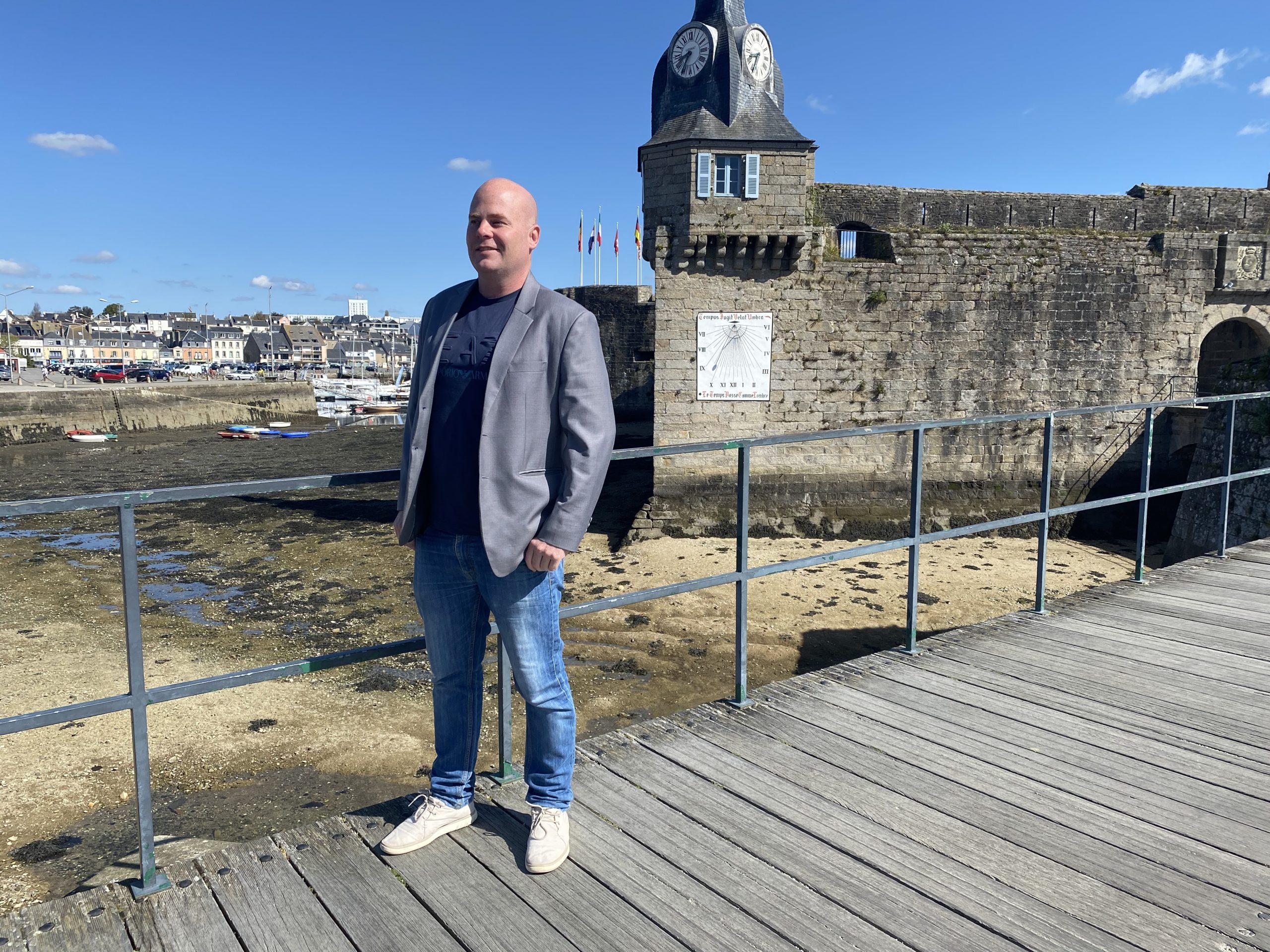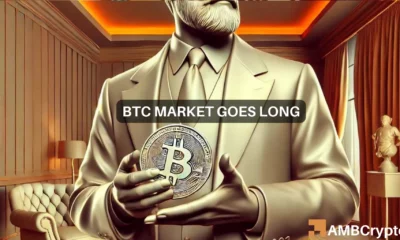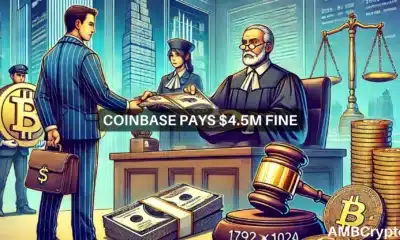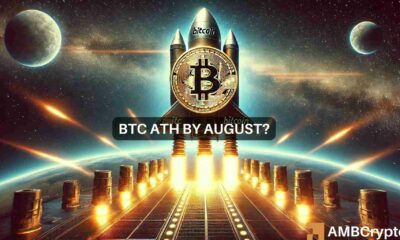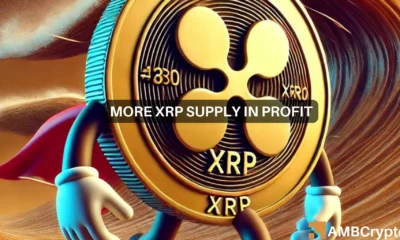Digitizing Real Estate: An interview with Etherland CEO Marc Couzic

NFTs (Non-Fungible Tokens) are becoming quite the rage and their market has tripled over the past year. In such a scenario, the real-world use cases for NFTs are increasing, leaving no sector untouched. Real estate is one such sector that has been conventional in its own ways. By bringing practicality and uniformity to it, Etherland is seeking to transform the real estate sector all over the world.
Etherland’s platform aims to create an immutable digital identity for every real estate on the planet, this way they want to build their World Metaverse integrating the IPFS (InterPlanetary File System) with the Ethereum blockchain as a decentralized way of storage and exchange of information. The Estatepedia is their marketplace built on top of Etherland’s Metaverse which would allow users to create, maintain, and own their information in the form of LAND IDs.
Etherland’s platform seems promising in its approach towards real estate owners and buyers alike and to build upon their growing popularity, the platform has a lot planned out, one of which is their mobile application. Etherland’s mobile application uses Augmented Reality and gives its users the chance to ‘catch’ NFTs and LAND IDs.
In conversation with Marc Couzic, the CEO of Etherland, we discuss the platform, upcoming projects, their mobile application, and much more.
1. The real estate sector is far behind when it comes to integrating technology in it, while Etherland is taking major steps towards making virtual estate a reality. What are some of the challenges the team faced in this project?
In terms of the challenge of bridging the gap between Non-Fungible Tokens and sound use cases in the real world, this is actually the main question for all blockchain use cases, and not only within real estate. For our sector, the problem is that many virtual NFT projects were built with only a gaming purpose in mind, some merely seeking to develop inside these virtual worlds, and others, like us, wishing to create a bridge between the digital world and the real world. The main challenge is thus to keep focusing on the user needs in the real world.
As we move on and develop, we see technological solutions only as a tool to provide the best solutions and user experiences, to enable the use of the Etherland applications. This is why, when it comes to the World Metaverse we are in the process of building, all our NFT-related data, such as cadastres, metadata, pictures, description content, are the exact mirror of the real world.
That being said, there are a few secondary challenges, such as monitoring trademarks and copyrights of each and every place, ensuring precise description information, and employing the best developers for the project, but basically, these are, of course, common challenges faced by most companies.
2. NFTs are quite the rage at the moment and their use case in art, music, and pop culture have taken off. What are your expectations for NFT integration in real estate?
You are right, NFT digital arts is currently the most vibrant place in Blockchain. Since NFT was created, I have always seen the ERC721 and ERC1155 technology as the most efficient tool to tokenize items and assets. It is no wonder why today’s virtual worlds are the second largest growing NFT category after digital arts.
In the near future, NFT technology will be used as the main tool to identify and keep all history data of any real estate. With a single token, we will be able to store all the information on an immutable blockchain, while avoiding interruption of services or data loss when using IPFS technology.
The blockchain is about to become the next internet space of freedom. More people will own LAND IDs, and less centralized government censorship will be possible. It will empower people with their own analyses, data input, and thoughts about a place. And it will also enable to fact-check everyone’s data input.
Getting the true information through the Metaverse about an event occurring in a certain place, real estate information, landmarks, your favorite surf spots… the possibilities seem endless! Real Estate will never be the same again after the NFT integration.
3. While the Etherland marketplace, Estatepedia, offers people the opportunity to create a LAND ID for their own real estate, what was the objective behind incorporating historical monuments in the mix?
This question is interesting but implies that historical monuments are separate from global real estate, which is a common misconception. The problem is that we usually conceive real estate only as private property in our minds. On the Metaverse, the same mindset does not apply. In fact, global real estate is much more than what we can think of, it corresponds to our cultural heritage landmarks, our forests, lands, lakes, stadiums, art museums, to name only a few…
Likewise, monument’s digitalization is more than just a proof of concept. The Etherland solution for data tracking can be used to preserve our historical information, for we keep records of them forever, without being scared of losing some important elements. Presently, most people around the world do not own any real estate, while a few own plenty.
As more and more people are getting involved with the digital world, the physical world is bound to lose some of its importance, while virtual spaces will become costlier. This could turn out to be the biggest revolution for real estate since men started exploring and conquering different continents and previously unknown territories.
4. What was the vision behind creating the Etherland Metaverse?
Etherland is all about brotherhood, connecting cultures, countries, all the people in the world who can participate in the building of the World Metaverse under a Universal Real Estate Code where one unique NFT represents only one place. It is also about the possibility, for every user, to create a LAND ID of any place on this globe, to grow its online awareness, and share it with the Etherland community of digital landowners.
But this is not everything. As we are shifting rapidly into digital, centralized, and data information centers, we are running the risk of losing control over the content. Our blockchain application can prevent this problem. Smart contract technology, when applied to real assets identification, can become the next space of freedom like the internet was 15 years ago.
I think the way we have built the Etherland Metaverse, digitalization will no longer be a threat, but on the contrary, a huge opportunity for all of us to take control over the place-related data concerning our planet, and to claim how much we care about our freedom. – In a sense, we are like pioneers advancing in a new area, and my guess is that one-day hundreds of thousands of LAND IDs will be owned by those who will most probably and definitely change our world.
5. The Etherland AR mobile app offers users the chance to register as players and ‘catch’ NFTs and crypto in their wallets directly. How do you expect this strategy to pan out in terms of expanding your user base?
We started to launch our products only two months ago, and we are constantly developing. For the time being, the focus is more on production and on innovation, but soon-to-be-launched marketing campaigns are already around the corner to give the project more visibility.
What is important to note is our strong community and social networks system which has been working very supportive. We are going through a period of considerable growth of mobile application downloads and expect this rate to continue its increase, after the launch offers and the giveaway campaign on April 15th for the mobile application. To my mind, the best way to gain attraction is to incentivize the people who participate in the ecosystem. That is presently our focus with coming launches. On the 30th of April, the registration of custom NFTs will be live and we will offer 50 Free NFTs to participants!
On top of that, we have been contacted by the media and a few newspapers, so we expect to have more content coming out not only in the press within the next few weeks, but also thanks to a few good YouTubers who have started to share our developments, and we expect to have more when the app will show its first use cases. And finally, some advertising campaigns are also in preparation.
6. What is the registration process for creating a LAND ID and how will Etherland make sure the process is easy for users while ensuring proper verification?
We are using a user-friendly customer interface for people to be guided along the process.
All the necessary questions and content required will be asked. In just a matter of days, we will launch the complete registration form to be filled in.
7. What are the rewards that a user can get through the Augmented Reality mode on the mobile app?
On April 15, we will celebrate the launch of the app and reward users with 3 kinds of rewards. This giveaway is totally free and will spread throughout the globe for you to catch until May 15!
1st ELAND Tokens, which is the most common ERC20 Token of Etherland’s Ecosystem.
2nd, LAND ID NFTs of real-world places. The Angkor Wat, for instance, one of the first LAND ID minted, will be given out during this campaign.
3rd type of reward is the Vouchers to create your own NFTs. They will allow the creation of your LAND ID for free when the registration opens.
8. The ELAND token is currently available on PancakeSwap, Bilaxy, and UniSwap. What are the future prospective use cases for Etherland’s utility token, ELAND, that would make it stand out from the rest?
It will be used as a payment token to create LAND IDs, an access token to modify your Estatepedia profile, the Carbon Credit Reward, and much more… As for exchanges, more integrations will come after the campaign.
9. Etherland’s Carbon Credit Reward system seems promising in terms of addressing the environmental conundrum at hand. How are you planning to make sure it works out effectively?
To my mind, this is a particularly important question. We have come to the conclusion that this may be the most effective way to involve homeowners. It works in two ways, as owners have to create digitalized assets of their property in order to enter the credit reward scheme and they have to make the necessary adjustments to their real estate in order to receive higher rewards.
It has a “double pull” adoption effect. As Etherland gets more digitalized real estate, the users gain more rewards. I personally believe that the most effective and rapid way to fight against real estate carbon emissions is through increasing awareness among the owners.
10. What are the goals that Etherland plans to achieve this year?
We are planning to have more or less 10 000 LAND IDs on the Metaverse by the end of this year with a minimum of roughly 3k to 4K owners. Within the coming weeks, we will start large scaling production so we can expect to grow our number of LAND IDs rapidly. Consequently, we can expect at least 100 000 LAND IDs by the end of 2022.
In the meantime, we are planning to link all LAND IDs with Estatepedia content and continue the building of our V2 platform which will integrate automated payment solutions and the next milestones of our development.
For more information check out their website.
Disclaimer: This is a paid post and should not be treated as news/advice

